

The Great Glen is a natural split in the earth that virtually divides Scotland into two.
The Caledonian Canal was completed in 1847 to join Inverness to Fort William, and provide sailing ships with a safer passage than that offered by going round the north of Scotland
Caledonian Canal - the 60 miles from Inverness to Fort William comprises the two large lochs, Loch Ness and Loch Lochy and 22 miles of canal and 29 locks linking it all together. It was designed by Thomas Telford ( a Scot born in Dumfries). An interesting feature is Neptune's Staircase on the canal near Fort William.
Fort William and Ben Nevis - was a garrison town, but now stands guard only over the western end of the Caledonian Canal.Britain's highest mountain, Ben Nevis at 4406 feet, rises up behind the town. The first fort was an earth and wattle construction built in 1655 by General Monk, but was rebuilt in stone in 1690 under the orders of William III, hence Fort William. The Jacobites failed to capture the fort in either 1715 or 1745, and it was garrisoned until 1855, after which it was demolished
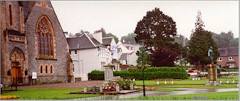 |
 |
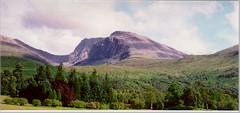 |
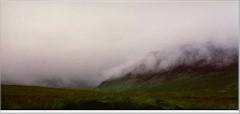 |
|
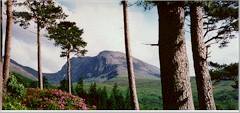 |
The weather can change rapidly, and one has to be well prepared to climb Ben Nevis
Loch Ness General Wade built a military road along the great glen in the early 18th century to open up the Highlands and control the clans. However it was only with the construction of a new road for cars in 1933 that larger numbers of people began to travel along Loch Ness
Loch Ness is long, 24 miles, and deep (400 feet average, dropping to 750 feet in places), and about one mile wide. Tales of monsters have been associated with the loch for many years. An inscription on a 14th century map tells of "waves without wind, fish without fins, islands that float", a description that has not been bettered by the many witnesses who have seen Nessie.
Perhaps the most famous siting is the 1934 photo below, taken by a London surgeon
 |
 |
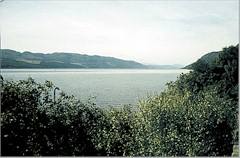 |
Today bagpipers serenade the monster, zoologists deny that it could ever still exist, midget submarines search for it, nobody has conclusive proof one way or the other. Perhaps the mystery is more exciting than any scientific solution
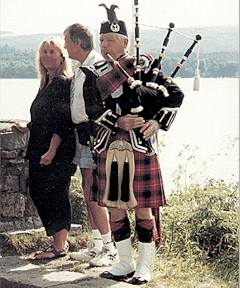 |
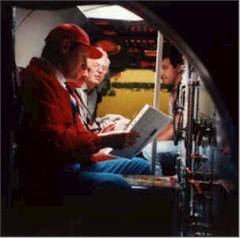 |
The debate will continue. There have been around 1000 sightings over the last 40 years. Whatever the answer, the location is magical. Perhaps the best viewing point is round the ruins of Urquhart Castle, by the light of a full moon
More information on Nessie and the Loch Ness
 |
 |
 |
Inverness - meaning "at the mouth of the River Ness", there has been a settlement here for at least 1500 years. The first stone castle was built by David in 1141. Even as late as Cromwellian times a fort was put up by soldiers between 1651 and 1657.
Just outside the city is the site of the Battle of Culloden,. On 16 April 1746, Bonnie Prince Charlie lost his change to regain the British throne. Culloden was the last major battle fought in Britain. Of the 9000 soldiers under the Duke of Cumberland, only 76 died in the battle. Of the 5000 Highlanders, about 1200 died - from a combination of the English cannons, the disciplined stand of the soldiers and the "take no prisoners" order given by Cumberland.There is a battle museum on the site, and memorials to the dead of both sides
| Scotland Calling Scotland Calling Front Page |
|
| . | |
| Good hotels in Scotland Good Hotels in Scotland |
|